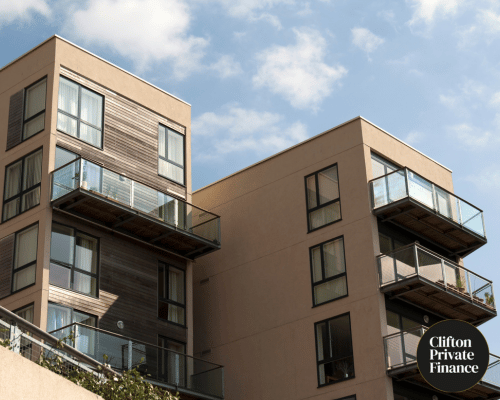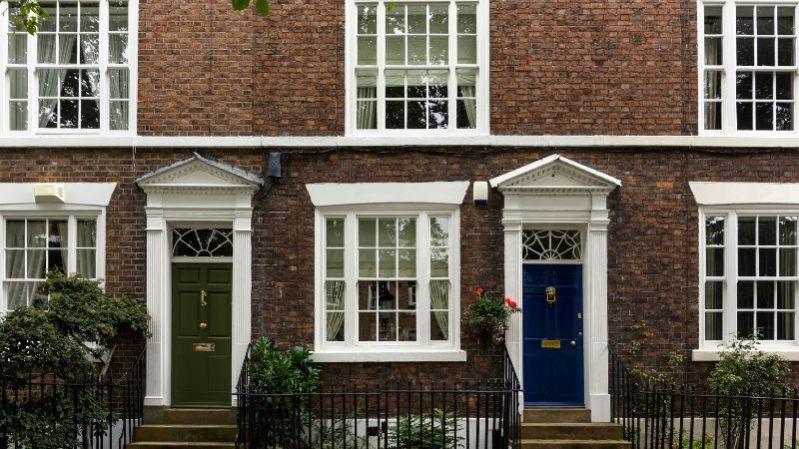What Does Buy to Sell Mean?
"Buy to sell" is a property investment strategy where investors purchase properties with the intention of selling them quickly for a profit rather than holding them long-term. This approach typically involves improving the property through renovations or upgrades to increase its market value before selling.
The strategy focuses on short-term investment, often spanning a few months to a couple of years, and aims to maximise profit by leveraging the enhanced property value or favourable market conditions.
Success in "buy to sell" depends on accurately timing the market to buy low and sell high and may involve using financial products like buy to sell mortgages or bridge loans to fund the purchase and renovations.
This method is popular among property developers and house flippers who have the expertise and resources to quickly enhance and sell properties.
Watch our video below - Bridging Loans Explained: Costs, Timescales, Examples, & How To Get One:
Who Can Benefit from a Buy to Sell Mortgage?
- Flipping Houses: Ideal for investors who buy properties at a lower price, renovate them, and sell them for a profit.
- Developers: Useful for property developers needing short-term funds to complete construction projects before selling units.
A Buy to Sell Mortgage can benefit a variety of individuals and entities involved in real estate investment and development. Key beneficiaries include:
- Property Developers - Those who purchase land or properties to develop and sell quickly can use this type of mortgage to finance their projects during the development phase.
- House Flippers - Investors who buy properties with the intention of renovating and selling them at a higher price within a short period can leverage a buy to sell mortgage to cover purchase and renovation costs. Related: Short Term Loans for Flipping Houses
- Property Investors - Investors looking to capitalise on short-term market opportunities can benefit from the flexibility and quick access to funds that buy to sell mortgages provide.
- Construction Companies - Companies that build or refurbish properties for resale can use this mortgage to manage cash flow and finance ongoing projects until the properties are sold.
- Auction Buyer - Individuals who buy properties at auctions often need immediate financing to secure the purchase and can use a buy to sell mortgage for this purpose.
- Landlords Transitioning Properties - Landlords who want to quickly sell off a portion of their portfolio to reinvest in other opportunities or to renovate and sell underperforming properties can use this type of financing.
- Small and Medium Enterprises (SMEs) - SMEs involved in property development or needing to quickly flip properties for business expansion can benefit from the short-term funding solutions offered by buy to sell mortgages.
How Do Buy to Sell Mortgages Work?
These short-term financing options are tailored for property developers and investors who purchase, renovate, and quickly sell properties for profit. Unlike traditional long-term mortgages, buy to sell mortgages typically span a few months to a couple of years and offer greater flexibility in repayment.
They usually come with higher interest rates and often require interest-only payments, with the principal due upon property sale. Lenders focus more on the potential post-renovation value of the property and the developer's plan and experience rather than the borrower's creditworthiness.
A clear exit strategy is crucial for approval, as lenders need assurance on how and when the loan will be repaid. This type of mortgage enables investors to access necessary funds quickly, making it ideal for house flipping or property development projects, though it involves higher costs and risks, necessitating a thorough understanding of the property market.
Two Key Reasons You Might Use a Buy to Sell Mortgage
Property developers and homeowners can find themselves in situations where they need a specialist short-term finance solution in order to sell a property. You may be wanting to buy a property to do-up-and-sell in a short time-frame. Or you may be wanting to buy-before-you-sell.
In both cases, the funding solution may be bridge finance, or bridging finance: a form of short-term property lending that bridges a finance gap between one situation and its long-term resolution, or "exit." Bridging finance is flexible, quickly-arranged, and less dependent on your personal financial circumstances than conventional long-term mortgages.
Here’s how it could work:
Buying to sell
- A straightforward "flip": in a rising market, if you’ve identified an opportunity to buy a property you believe is significantly under-priced, and will return a reasonable profit.
- A "fix-and-flip": if you have an opportunity to buy a property which will make a good return after light refurbishment (updating a bathroom or kitchen, or doing some decorative work).
In situations where it’s clear you don’t intend to own the property long-term, standard buy-to-let mortgaging won’t be appropriate for you:
- Early exit fees will make a big dent in your profit
- Lenders won’t agree to it
Bridge finance may also be a significant help to you in protecting cash flow if, for instance, you already own a number of properties on which you’re paying mortgages. An important feature of this kind of short-term finance is that the monthly interest can be "rolled up" into the loan, to be repaid at the end of the loan period.
Buy before you sell
Ideally, when we move house or buy an investment property we would sell our current property first and use the money to fund the purchase without any need for interim finance. But there are a number of situations in which this isn’t possible, or desirable:
- You’ve already found the property you want, and you don’t want to miss out to another purchaser.
- The property you want needs refurbishment and you don’t want to live amongst the disruption, or have the expense and upheaval of moving into rental property in the meantime.
- The property market is slow and it could take quite a few months for your current home, or investment property, to sell: you don’t want to feel pressured into accepting a price below current market value.
- You current property needs some work before it will achieve its full market value and you need funds to pay for the work before you put it on the market.
Bridging loans are normally offered for a maximum of 12 months, although longer loan terms may be possible depending on your circumstances. They can be set up more quickly than standard mortgages which have to fit into the cycle of review and approval of their underwriters.
You will usually have to pay an arrangement fee for taking out a bridging loan and there may be an exit fee when the loan is repaid (depending on the lender). Interest is normally charged monthly, although you may have the option to roll up the interest and pay it all in one go along with the capital when the loan term ends. Alternatively, you may be able to borrow extra to cover the interest with this added to the total capital you repay at the end.
Use our bridging loan calculator to get a quick cost estimate.
What Are The Eligibility Criteria for a Buy to Sell Mortgage?
The eligibility criteria for a buy to sell mortgage, also known as a bridging loan or property development loan, can vary among lenders but generally include the following key factors:
- Credit History - A good credit history is often required, bu not essential. Lenders will check your credit report to assess your reliability in repaying loans.
- Experience - Having experience in property development or buy-to-let investments can be advantageous. Some lenders may prefer borrowers who have successfully completed similar projects.
- Property Type and Condition - The property you intend to buy and sell should meet the lender's criteria. Properties requiring extensive renovation may have different requirements than those in good condition.
- Exit Strategy - A clear exit strategy is crucial. Lenders need to know how you plan to repay the loan, whether through selling the property, refinancing, or another means.
- Valuation and Survey: A professional valuation and survey of the property are usually required to assess its current and potential value post-renovation.
- Security: The property itself often serves as security for the loan. Lenders will evaluate its potential resale value and marketability.
Compliance with legal requirements or planning permissions for property modifications is also essential. Lenders will want to ensure that the project adheres to local regulations.
How to Repay a Buy to Sell Mortgage
When you take out this type of short-term finance, you will usually have to agree your exit at the outset: that is, specify exactly how it will be repaid.
- If you’re using the bridging finance for a straightforward buy-to-sell, your exit will be the sale of the property.
- If you’re using the finance to buy a new property before a current one is sold, you will generally either be repaying with the proceeds of selling your previous property, or by taking out a standard mortgage once the previous mortgage is paid off.
More details: How much does a bridging loan cost
How to Fund a Buy to Sell Property
When making any significant financial decision, especially regarding a property loan, it's always best to seek the help of a financial expert. This will ensure you're getting finance at an affordable and favourable rate.
At Clifton Private Finance, we have an award-winning bridging team dedicated to driving results. We have relationships with lenders across the whole bridging market and have access to the best deals. Our bridging brokers can guide you through the process and liaise with lenders on your behalf.
To see what we can do for you, call us on 0117 205 4838 or book a free consultation below.











